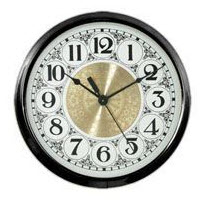Understanding Clock Dials, Hands, and Movements

Clock dials, hands, and movements are the important parts that enter into building a functioning wrist watch. Clock dials and also hands are the "program" component, or discussion, while movements (also called electric motors) are the "compound" component, or the engine of control. These parts can be purchased independently from an on the internet merchant or acquired as a pre-assembled bundle.
Clock hands, movements, as well as dials were all at one time mechanical, but nowadays the clock motor is electronic, as are some accessory components. We're discussing analog clocks below, not electronic ones, which do every little thing electronically. It is valuable for the clockmaker who wishes to develop signature antiques or off-the-shelf items to comprehend just how all the various components interact.
We'll begin with the clock movement, as it is the component that regulates the activity of the hands as well as gets every little thing done. At its heart is a quartz crystal that, under a voltage decrease, shakes exceptionally fast at a dependably precise frequency. The resulting pulses are counted in mathematical signs up, and the count is partitioned to set off a tick every second.
Various other signs up matter seconds to cause minute adjustments, and min signs up trigger hour changes as the numerous limits are crossed. Time changes at each degree are exchanged a turning of among three concentric shafts, and also each shaft supports one of the three hands. This is exactly how timekeeping is presented on the dial of the timepiece.
The most standard clock undergoes a complete cycle every twelve hrs and simply informs time. However movements are capable of a lot more than this. They can keep track of time expansions (24-hour, once a week, as well as regular monthly cycles) and can additionally report weather condition phenomena such as humidity, temperature, pressure, as well as tide level.
Motors can likewise carry out supplementary features, including seeming chimes in synchrony with the hour and/or quarter hour. They can also provide oscillating accessory tabs for replicating the motion of pendulums.
If motors are the facility of function, clock dials are primarily form. They do need to correspond to the activity they are paired with in regards to displaying the appropriate cycle (12 hrs, 24 hours, week, or month), however aside from that dials are the emphasis of the onlooker's eyes and ought to be pleasing yet straightforward sufficient to permit promptly telling the time.
Concerns pertaining to the dial are essentially stylistic. There are Arabic characters, Roman numerals, or signs; the history color may be white, cream color, black, grey, and so on. After that one has to choose the dimension of the dial as well as whether it is taking place the wall surface or some other area.
Clock hands go hand-in-hand, as it were, with dials in that they need to match or complement each other stylistically, size-wise, and color-wise. It is additionally an excellent suggestion for the hands and dial background to present a solid contrast to ensure that it is simple at a glance to tell the moment.
However hands likewise present extra options, the main one being whether or not to have a pre-owned, and also, if so, whether to choose the common stop-and-tick movement or to have a constant move (and quiet) second hand. Make sure to pick a motion that sustains the sort of used you desire. Previouslies owned are typically in a different color in contrast with the hr and min hands.
There are numerous dial, hand, and also activity combinations that do points other than telling time, such as revealing the temperature level or the existing level of the trend. There's a vast globe of capability that a timepiece can do, yet constantly get the big picture of what you want before picking individual parts. The reader should now have a much better understanding concerning clock dials, hands, as well as movements.
